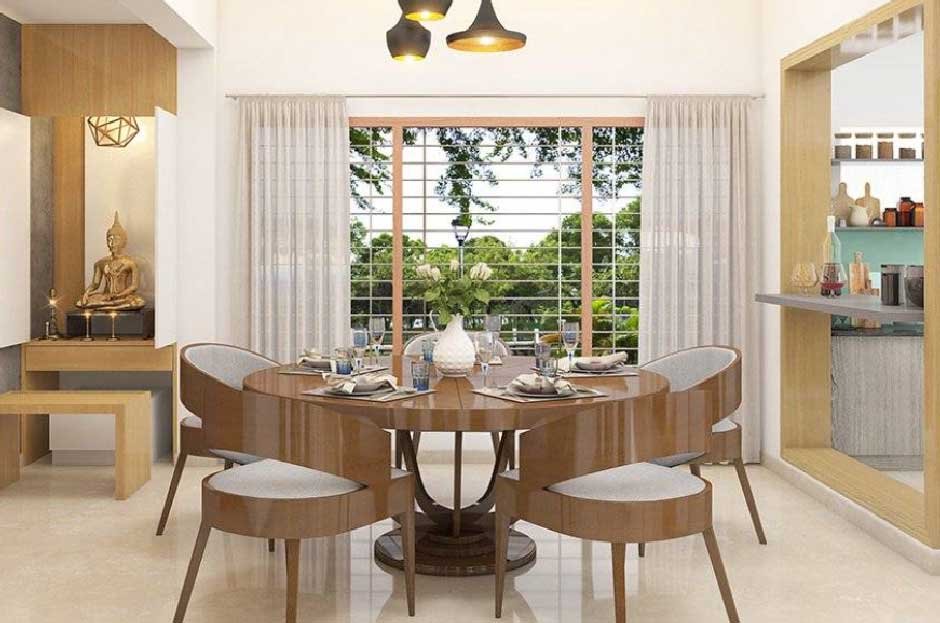Skip to the good bit
ToggleThe design of a restaurant can set the mood for dining, and tables are probably the most important part of this aesthetic and atmosphere. From reclaimed wood to metal and glass, innovative table designs balance style with practicality. Some can be adjusted; others can serve multiple functions, all sure to let your guests know that flexibility in seating is an option.
Impact of Table Designs on Ambiance
Ambience is one of the most important aspects of a restaurant in today’s fast-changing scenario, as often the style of food connects with the atmosphere in which it is served. Furniture, more importantly, restaurant tables, epitomize aesthetics and functional philosophies. The contemporary design of the tables turns the simple act of dining into an experience by bringing comfort and style together. A well-chosen table can make a difference in the aesthetic and psychological comfort of the guests. Soft colors and rounded edges are evoke calmness; patrons become more relaxed and stay longer to enjoy the meals. The placement of tables does encourage or discourage social interaction, further manipulating the feel of a restaurant. Furniture designs also provide insights into how it is aligned to create the vibe, which managers and designers are considering for the atmosphere of the restaurant.
Materials and Styles in Modern Design
Newer materials and styles come into play, changing the table look. Wood remains an ever-popular classic since such a rustic look will suit tastes that range from those who keep their dining habits traditionally minded to modern diners. There is a growing trend towards combining mixed materials, reflecting interior design trends in marrying form with function. Variety lets each different restaurant-style find just that table matching its taste, whether it is an industrial chic or minimalist elegance. Combining these elements creates a dynamic atmosphere, visually stirring and amplifying the dining experience. Combined material tables add depth to the decoration and could even find their way into being topics of conversation.
Functionality and Space Optimization
Finally, functionality couldn’t be an afterthought in a restaurant that moved as fast as the city. Space must be utilized well, as most restaurants can only stake a minimal claim in most cities. Some options include extending and folding tables that allow restaurants to seat bigger groups during the busier parts of the day. These flexible designs can accommodate the rapid reconfigurations necessary to accommodate whatever group sizes walk in on any given day. This offers personalized seating. This is how you solve the problem of a small space without sacrificing aesthetics. The thoughtful designs of the tables have made dining orderly, where the waiters can move around any moment with quick ease to attend to the customer’s rest. Understanding the dynamics of space in this type of establishment aids in picking a table so that aesthetics and functionality fall into place to bring about maximum efficiency in operations and customer satisfaction.
Sustainability Trends in Furniture Design
Following in the minds of consumers for sustainability, eco-friendly table designs are on the rise. This innocent wish conveys the placing of sustainable resources, such as bamboo and reclaimed wood, into furniture. Having their unique aesthetic attributes, these materials are invited into today’s interior design trends. This corresponds to consumer values and strengthens their brand loyalty, attracting a demographic concerned about sustainability. Other positive features of so-called sustainably sourced materials are their specific textures and color palettes; these nuances give originality to a dining room.
Innovative Concepts in Table Design
Restaurant tables are making a perfect fusion of technology and tradition with innovative design, from built-in wireless charging to integrated touch screens and mood lighting. They answer the desire for tech-savvy shoppers in their bid to provide efficiency and ease. This turns a table into not just a monofunctional thing but a part of an everyday environment where subtly interwoven, it may increase customers’ engagement. Restaurants continue setting trends, further positioning dining as a service and experience the customer relates personally to. All of that reflects the attitude of looking into the future that characterizes the latest transformation within this sector of adaptable and experiential environments.







